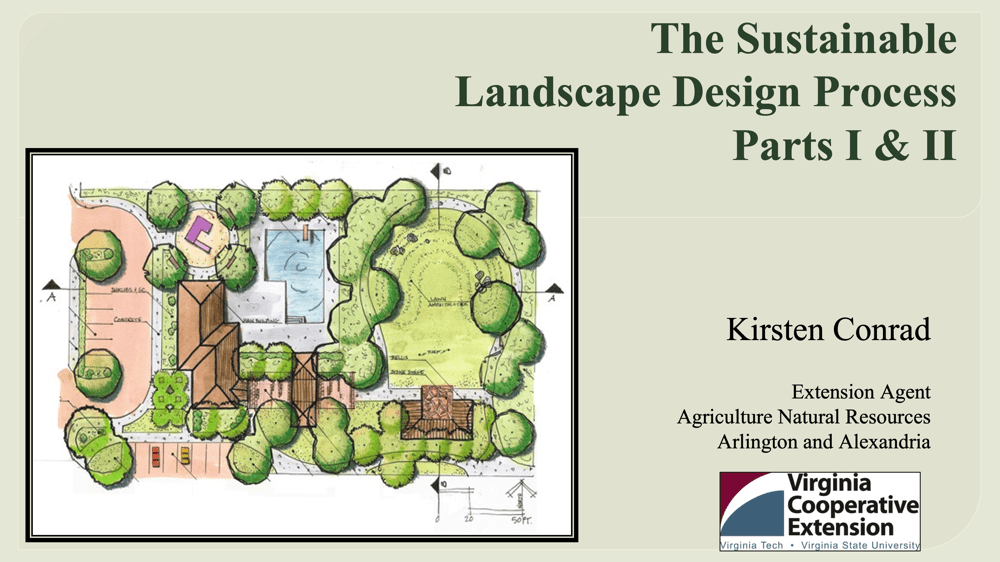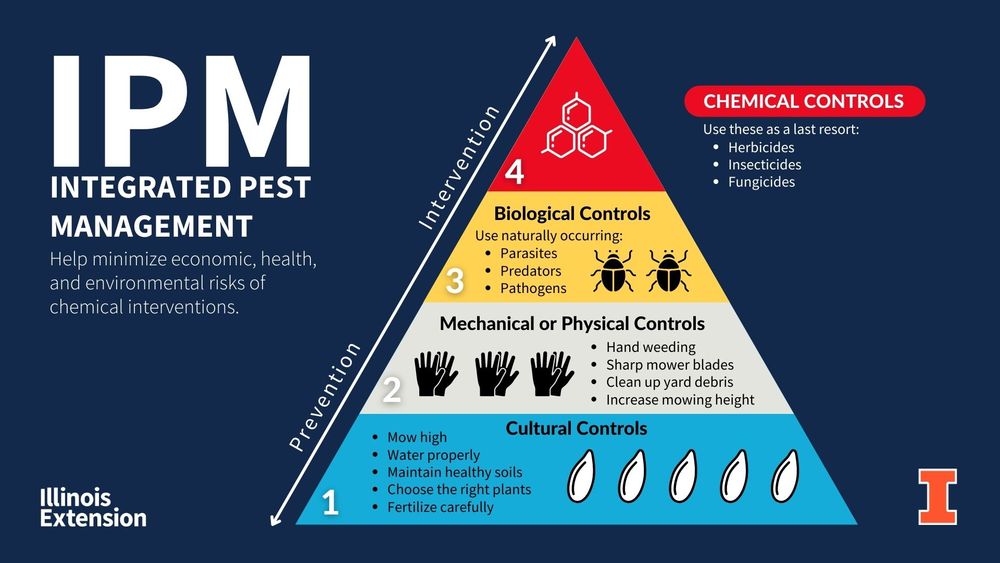
Introduction: The Urgency of Sustainable Landscape Management
In a world grappling with climate change, biodiversity loss, and resource depletion, the need for sustainable practices has never been more critical. This is especially true in landscape management, where decisions about how we design, build, and maintain our outdoor spaces can have profound impacts on the environment. Sustainable landscape management plans offer a powerful framework for creating beautiful, functional, and ecologically sound landscapes that benefit both people and the planet. This comprehensive guide delves into the principles, practices, and benefits of sustainable landscape management, providing you with the knowledge and tools to create thriving ecosystems in your own backyard or on a larger scale.
Understanding the Principles of Sustainable Landscape Management
At its core, sustainable landscape management (SLM) is about creating landscapes that meet the needs of the present without compromising the ability of future generations to meet their own needs. It’s a holistic approach that considers the ecological, social, and economic aspects of landscape design and maintenance. Several key principles underpin SLM:
- Conservation of Resources: Minimizing the use of water, energy, and other resources, and promoting the use of renewable resources.
- Protection of Biodiversity: Creating and maintaining habitats that support a wide variety of plant and animal species.
- Soil Health: Building healthy soils that are rich in organic matter and support plant growth.
- Reduction of Pollution: Minimizing the use of pesticides, herbicides, and fertilizers, and preventing pollution of water and air.
- Waste Reduction and Recycling: Reducing waste generation and promoting the reuse and recycling of materials.
- Ecosystem Services: Recognizing and enhancing the benefits that ecosystems provide, such as clean air and water, pollination, and carbon sequestration.
- Community Engagement: Involving local communities in the planning and management of landscapes.
These principles are interconnected and work together to create resilient and thriving landscapes.
Developing a Sustainable Landscape Management Plan: A Step-by-Step Guide
Creating a successful SLM plan involves a systematic approach that considers the specific needs and constraints of the site. Here’s a step-by-step guide to help you develop your own plan:
1. Site Assessment and Analysis
Before you start designing or implementing any changes, it’s crucial to understand the existing conditions of the site. This involves:
- Evaluating the Site’s Characteristics: Take stock of the topography, soil type, microclimates, existing vegetation, and water resources.
- Identifying Existing Problems: Look for areas of erosion, poor drainage, invasive species, or other issues that need to be addressed.
- Assessing the Site’s Context: Consider the surrounding environment, including adjacent properties, wildlife corridors, and the overall landscape character.
- Analyzing the Site’s History: Research the site’s past use and any previous management practices.
This thorough assessment provides a solid foundation for informed decision-making.
2. Defining Goals and Objectives
What do you want to achieve with your landscape? Clearly defined goals and objectives are essential for guiding the planning process. Consider the following:
- Desired Aesthetics: What kind of look and feel do you want to create?
- Functional Requirements: How will the landscape be used (e.g., recreation, food production, wildlife habitat)?
- Environmental Goals: What specific environmental benefits do you want to achieve (e.g., water conservation, habitat restoration)?
- Budget and Timeline: What are the financial and time constraints?
Make sure your goals are SMART: Specific, Measurable, Achievable, Relevant, and Time-bound.
3. Design and Planning
This is where you translate your goals and objectives into a concrete plan. Consider the following elements:
- Plant Selection: Choose native or well-adapted plants that are appropriate for the site conditions and that provide ecological benefits.
- Water Management: Implement water-efficient irrigation systems, such as drip irrigation or rainwater harvesting.
- Soil Management: Improve soil health through composting, mulching, and other soil-building practices.
- Hardscape Design: Use permeable materials for walkways and patios to reduce runoff.
- Material Selection: Choose sustainable materials, such as reclaimed wood, recycled plastic, or locally sourced stone.
- Wildlife Habitat: Incorporate features that support wildlife, such as birdhouses, bat houses, and pollinator gardens.
The design should be visually appealing, functional, and environmentally sound.
4. Implementation
Putting your plan into action requires careful execution. This involves:
- Preparing the Site: Clearing the area, grading the land, and preparing the soil.
- Planting: Planting trees, shrubs, and other plants according to the design plan.
- Installing Hardscape Features: Building walkways, patios, and other hardscape elements.
- Installing Irrigation Systems: Setting up water-efficient irrigation systems.
- Monitoring and Evaluation: Regularly monitoring the progress of the project and making adjustments as needed.
Proper implementation is critical to the success of the plan.
5. Maintenance and Monitoring
Sustainable landscape management is an ongoing process. Regular maintenance and monitoring are essential for ensuring the long-term health and vitality of the landscape. This includes:
- Watering: Adjusting watering schedules based on weather conditions and plant needs.
- Fertilizing: Using organic fertilizers and avoiding the overuse of synthetic fertilizers.
- Weeding: Controlling weeds through hand-pulling, mulching, or other non-chemical methods.
- Pruning: Pruning plants to maintain their health and shape.
- Pest and Disease Management: Using integrated pest management (IPM) strategies to control pests and diseases.
- Monitoring: Regularly assessing the health of the plants, the performance of the irrigation system, and the overall ecological health of the landscape.
Consistent maintenance ensures the landscape continues to thrive.
Key Components of a Sustainable Landscape Management Plan
A comprehensive SLM plan typically includes several key components:
- Site Analysis Report: A detailed assessment of the site’s existing conditions.
- Goals and Objectives: A clear statement of the desired outcomes.
- Design Plan: A visual representation of the landscape design, including plant lists, hardscape details, and irrigation plans.
- Planting Plan: A detailed list of plants, including their size, spacing, and cultural requirements.
- Irrigation Plan: A plan for water-efficient irrigation.
- Soil Management Plan: A plan for improving soil health.
- Maintenance Schedule: A schedule for regular maintenance tasks, such as watering, fertilizing, and pruning.
- Monitoring Plan: A plan for regularly assessing the health of the landscape.
- Budget: A detailed budget for the project.
- Timeline: A timeline for the implementation and maintenance of the plan.
These components work together to create a cohesive and effective plan.
Sustainable Practices in Landscape Management
Let’s delve into some specific sustainable practices that can be incorporated into your landscape management plan:
Water Conservation
Water is a precious resource, and conserving it is essential for sustainable landscaping. Here are some ways to reduce water consumption:
- Xeriscaping: Designing landscapes that require little or no supplemental irrigation. This involves using drought-tolerant plants and grouping plants with similar water needs.
- Efficient Irrigation Systems: Installing drip irrigation systems, which deliver water directly to the roots of plants, and using smart controllers that adjust watering schedules based on weather conditions.
- Rainwater Harvesting: Collecting rainwater from roofs and other surfaces and storing it for irrigation.
- Mulching: Applying a layer of mulch around plants to retain moisture in the soil and reduce evaporation.
- Proper Planting Techniques: Planting plants at the appropriate depth and spacing to promote healthy root growth.
By implementing these practices, you can significantly reduce your water bill and conserve this valuable resource.
Soil Health Management
Healthy soil is the foundation of a thriving landscape. Here’s how to build and maintain healthy soil:
- Composting: Adding compost to the soil to improve its structure, fertility, and water-holding capacity.
- Mulching: Applying a layer of organic mulch to the soil to suppress weeds, retain moisture, and improve soil health.
- Cover Cropping: Planting cover crops, such as clover or rye, to improve soil fertility and prevent erosion.
- Avoiding Soil Compaction: Avoiding activities that compact the soil, such as excessive foot traffic or the use of heavy machinery.
- Testing Soil: Regularly testing the soil to determine its pH, nutrient levels, and organic matter content.
Healthy soil supports healthy plants and reduces the need for fertilizers and pesticides.
Plant Selection and Design
Choosing the right plants is crucial for creating a sustainable landscape. Consider these factors:
- Native Plants: Using native plants that are adapted to the local climate and soil conditions. Native plants require less water, fertilizer, and pesticides than non-native plants and provide habitat for wildlife.
- Drought-Tolerant Plants: Selecting plants that can tolerate dry conditions and require little or no supplemental irrigation.
- Planting in the Right Place: Matching plants to the appropriate growing conditions, such as sun exposure, soil type, and drainage.
- Creating Plant Communities: Grouping plants with similar needs and creating diverse plant communities to support a variety of wildlife.
- Avoiding Invasive Species: Avoiding the use of invasive plants that can outcompete native plants and disrupt ecosystems.
Thoughtful plant selection and design are key to creating a beautiful and ecologically sound landscape.
Pest and Disease Management
Controlling pests and diseases in a sustainable way is crucial for maintaining a healthy landscape. Here are some strategies:
- Integrated Pest Management (IPM): Using a combination of methods to control pests and diseases, including cultural practices, biological controls, and the judicious use of pesticides.
- Choosing Pest-Resistant Plants: Selecting plants that are resistant to common pests and diseases.
- Promoting Beneficial Insects: Creating habitats for beneficial insects, such as ladybugs and lacewings, that prey on pests.
- Using Organic Pesticides: Using organic pesticides, such as insecticidal soap or neem oil, when necessary.
- Avoiding the Overuse of Pesticides: Avoiding the overuse of pesticides, which can harm beneficial insects and pollute the environment.
IPM is a holistic approach that minimizes the use of harmful chemicals.
Waste Reduction and Recycling
Reducing waste and recycling materials are essential for creating a sustainable landscape. Here are some practices to implement:
- Composting Yard Waste: Composting grass clippings, leaves, and other yard waste to create nutrient-rich soil amendments.
- Using Recycled Materials: Using recycled materials, such as mulch, pavers, and decking, whenever possible.
- Reducing Plastic Use: Reducing the use of plastic in the landscape, such as plastic pots and containers.
- Reusing Materials: Reusing materials, such as bricks and stones, whenever possible.
- Proper Disposal of Waste: Disposing of waste properly and recycling materials whenever possible.
These practices help minimize waste and conserve resources.
Energy Conservation
Conserving energy is another important aspect of sustainable landscape management. Consider these practices:
- Using Energy-Efficient Lighting: Using LED lighting for outdoor lighting.
- Using Solar Power: Using solar panels to power irrigation systems or other landscape features.
- Reducing the Use of Power Equipment: Using hand tools instead of power equipment whenever possible.
- Choosing Energy-Efficient Equipment: Choosing energy-efficient equipment, such as electric lawn mowers.
- Planting Shade Trees: Planting shade trees to reduce the need for air conditioning.
Energy conservation helps reduce your carbon footprint.
Benefits of Sustainable Landscape Management
Sustainable landscape management offers a wide range of benefits for both people and the planet:
- Environmental Benefits:
- Conserves water and reduces runoff.
- Improves soil health and reduces erosion.
- Reduces pollution from pesticides and fertilizers.
- Provides habitat for wildlife.
- Enhances biodiversity.
- Sequester carbon from the atmosphere.
- Economic Benefits:
- Reduces water and energy bills.
- Reduces the need for fertilizers and pesticides.
- Increases property values.
- Creates jobs in the green industry.
- Social Benefits:
- Creates beautiful and enjoyable outdoor spaces.
- Improves air and water quality.
- Promotes community engagement.
- Provides opportunities for recreation and education.
These benefits make SLM a win-win for everyone.
Overcoming Challenges in Implementing Sustainable Landscape Management
While the benefits of SLM are numerous, there can be challenges in implementing it. Here’s how to overcome some common obstacles:
- Cost: Sustainable practices can sometimes have higher upfront costs. However, the long-term cost savings from reduced water, energy, and fertilizer use often outweigh the initial investment. Look for government incentives and rebates to help offset costs.
- Education and Training: A lack of knowledge about sustainable practices can be a barrier. Seek out educational resources, such as workshops, seminars, and online courses. Hire experienced landscape professionals who are knowledgeable about SLM.
- Time Commitment: Implementing a SLM plan requires time and effort. Start small and gradually incorporate sustainable practices into your landscape.
- Resistance to Change: Some people may be resistant to changing their traditional landscape practices. Educate them about the benefits of SLM and demonstrate how it can enhance their property.
- Availability of Materials: Sustainable materials may not always be readily available. Plan ahead and source materials from reputable suppliers.
With careful planning and perseverance, these challenges can be overcome.
Case Studies: Success Stories in Sustainable Landscape Management
To illustrate the power of SLM, let’s look at a few inspiring case studies:
The Eden Project, Cornwall, UK
The Eden Project is a remarkable example of sustainable landscape design. This project features massive biomes that house diverse plant species from around the world. The project incorporates rainwater harvesting, composting, and other sustainable practices. It has become a major tourist attraction and a center for environmental education.
The High Line, New York City, USA
The High Line is an elevated park built on a former railway line. The park features native plants, permeable paving, and rainwater harvesting. It has transformed a derelict space into a vibrant public park and has become a model for sustainable urban design.
Local Parks and Gardens
Many local parks and gardens are embracing sustainable practices, such as using native plants, reducing water consumption, and composting yard waste. These projects demonstrate that SLM can be implemented on a variety of scales and can benefit communities.
These case studies highlight the transformative potential of SLM.
Conclusion: Embracing a Sustainable Future for Landscapes
Sustainable landscape management is no longer a trend; it’s a necessity. By embracing the principles and practices outlined in this guide, you can create landscapes that are not only beautiful and functional but also environmentally responsible. From conserving water and protecting biodiversity to reducing waste and promoting soil health, SLM offers a powerful framework for creating a more sustainable future for our landscapes and for generations to come. Start today by assessing your site, defining your goals, and implementing sustainable practices. Your efforts will contribute to a healthier planet and a more vibrant community.


